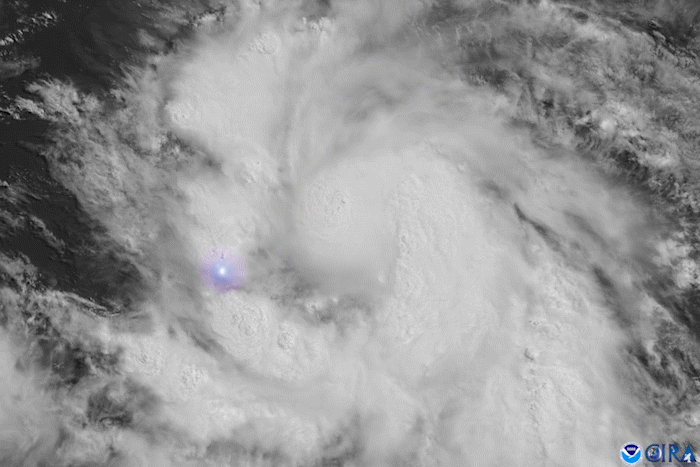Hurricane Elsa’s Early Arrival Could Mean a Busier-Than-Usual Storm Season in the Atlantic
Following Elsa, the fifth hurricane so far, experts now forecast at least 20 named tropical storms and nine named hurricanes in total
/https://tf-cmsv2-smithsonianmag-media.s3.amazonaws.com/filer/3f/b1/3fb12611-2c33-4ac7-99b4-589a847e37f3/0721_elsa-sat-jul1_1600.jpeg)
When Hurricane Elsa formed south of the Tropic of Cancer on July 2, some researchers became concerned the storm is a "harbinger of a very active season." While Elsa quickly downgraded to a tropical storm, it was one of only a handful of hurricanes in recorded history to develop that far south before August.
Following Elsa’s progression, atmospheric scientist Phil Klotzbach of the Colorado State University and his team upgraded their predictions for the 2021 hurricane season to a more active forecast.
“In general, early season Atlantic hurricane activity has very little correlation with overall Atlantic hurricane activity,” he tells Josh Fiallo of the Tampa Bay Times. “But when this activity occurs in the tropics, that is typically a harbinger of a very active season.”
The university’s Tropical Meteorology Project increased its forecast to 20 named storms and nine hurricanes. In April, it had predicted the 2021 season would net 17 named storms and eight hurricanes.
Most hurricanes form between the Equator and Tropic of Cancer, known as the “main development region.” However, those storms usually develop in September and October. In the past, when hurricanes formed before August 1, the National Hurricane Center labeled those seasons as “hyperactive,” the Tampa Bay Times reports.
“It is concerning that Elsa formed early in the season in the main development region,” Jeff Masters, a hurricane researcher at Yale University and founder of Weather Underground, tells Fiallo.
Early season hurricanes could indicate a far more active storm period in the Caribbean and along the Gulf and Atlantic coasts of the United States. Last year’s record-breaking season wreaked havoc in those areas with 30 named storms and 14 hurricanes.
NOAA’s Climate Prediction Center is forecasting a busier-than-usual season. Researchers are predicting 13 to 20 named storms and three to five major hurricanes—less activity than 2020 but still potentially troublesome.

“Although NOAA scientists don’t expect this season to be as busy as last year, it only takes one storm to devastate a community,” says Ben Friedman, acting NOAA administrator, in a press release.
This year, Elsa became a tropical storm on July 1—the fifth earliest named storm in history. By July 2, it shattered the record for becoming the fifth storm of the season, set last year by Edouard on July 5, according to senior Weather Channel meteorologist Jonathan Erdman.
“That’s also over six weeks earlier than the average date of the fifth storm—August 18—from 1991 through 2020,” he writes in the Hurricane Central blog. “In eight of those 30 years, from 1991 through 2020, the fifth storm didn’t arrive until September.”
If the brutal 2020 season is any indication, it means coastal communities must be prepared. Last year, a record-tying six hurricanes struck the United States, causing tens of billions of dollars in damage. The Louisiana coast alone was hit three times by hurricanes. (Six hurricanes also made landfall in the U.S. in the years 1985 and 1886, according to Masters.)
“Now is the time to get ready and advance disaster resilience in our communities,” FEMA administrator Deanne Criswell in the NOAA article. “Visit Ready.gov and Listo.gov to learn and take the steps to prepare yourself and others in your household.”
In his blog, Erdman advises those who live along the coast not to wait in taking precautions. He recommends people visit the website hurricanestrong.org, developed by the nonprofit Federal Alliance for Safe Homes (FLASH) organization, to learn how to strengthen their homes and safeguard their families from natural and human-made disasters.
“Where and when Elsa formed is a strong indicator of an active season,” he writes, adding, “If anything, this early activity is a reminder that the time to prepare for another hurricane season is now.”
/https://tf-cmsv2-smithsonianmag-media.s3.amazonaws.com/accounts/headshot/dave.png)


/https://tf-cmsv2-smithsonianmag-media.s3.amazonaws.com/accounts/headshot/dave.png)